Stypandra glauca
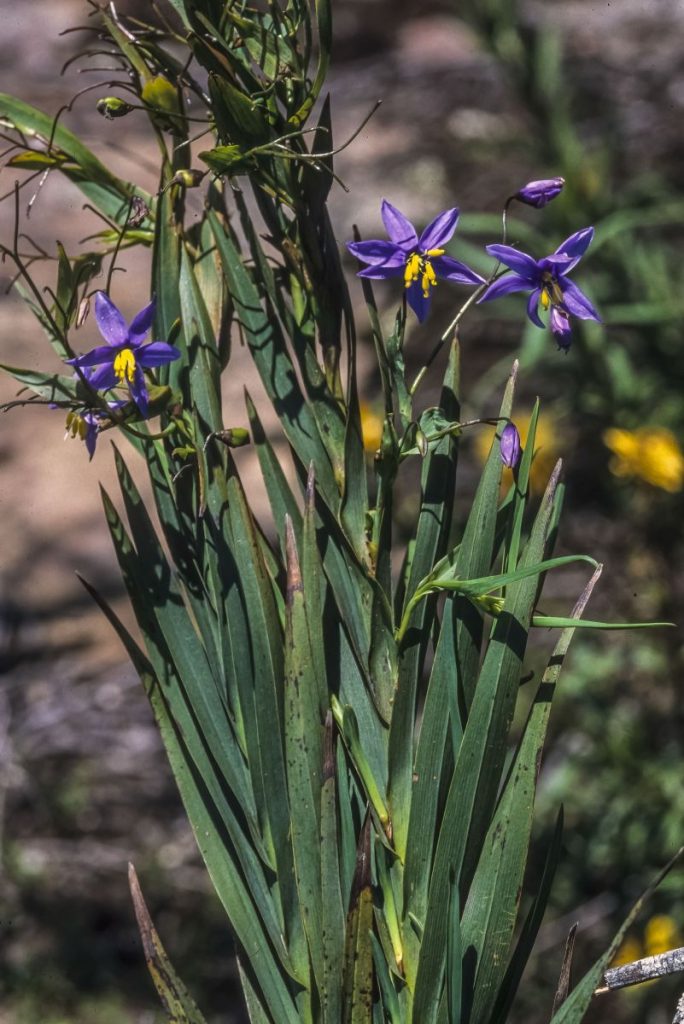
An erect clumping lily-herbaceous and rhizomatous perennial to 1.5 metres tall, with aerial flowering stems.
Oplismenus imbecillis
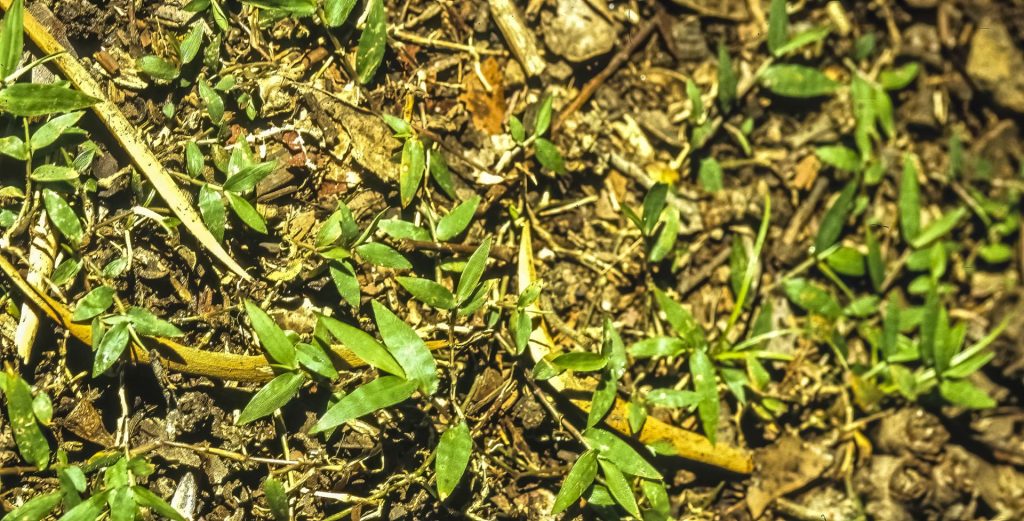
A ground-covering grass which can form large colonies to several metres wide,growing to about 0.3 metres tall. It has thin wiry stems which root at some notes.
Oplismenus aemulus
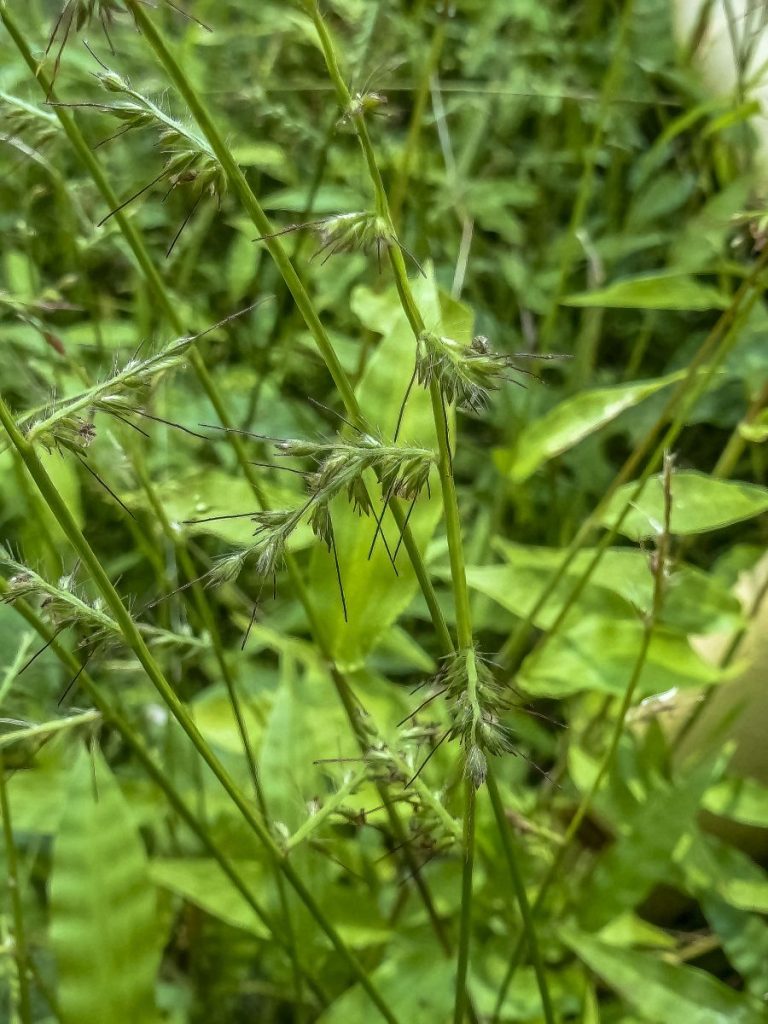
A ground-covering grass which can form large colonies to several metres wide, growing to about 0.3 metres tall. It has thin wiry stems which root at some notes.
Burchardia umbellata
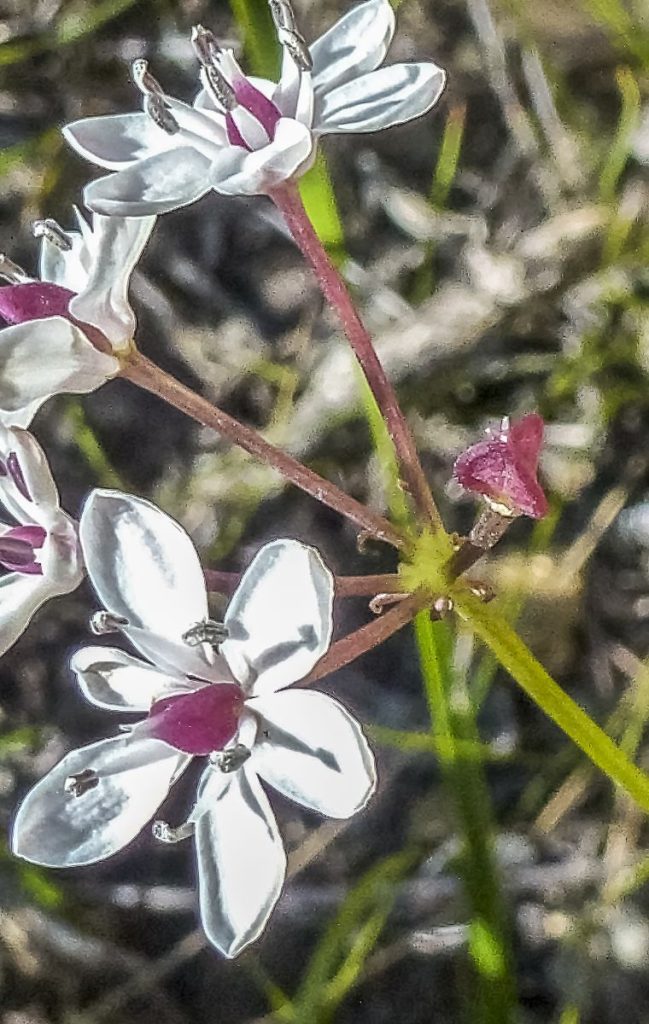
It has a very wide and interesting geographic range, occurring in NSW along most of the coast, extending inwards as far as the Dubbo-region, the ACT and Albury. It occurs though most of Victoria with the exception of the north-west; continuing into the Adelaide and Port-Lincoln areas, as well as Kangaroo Island in South Australia. It extends along the coast into Queensland as far as Fraser Island.
Blandfordia grandiflora
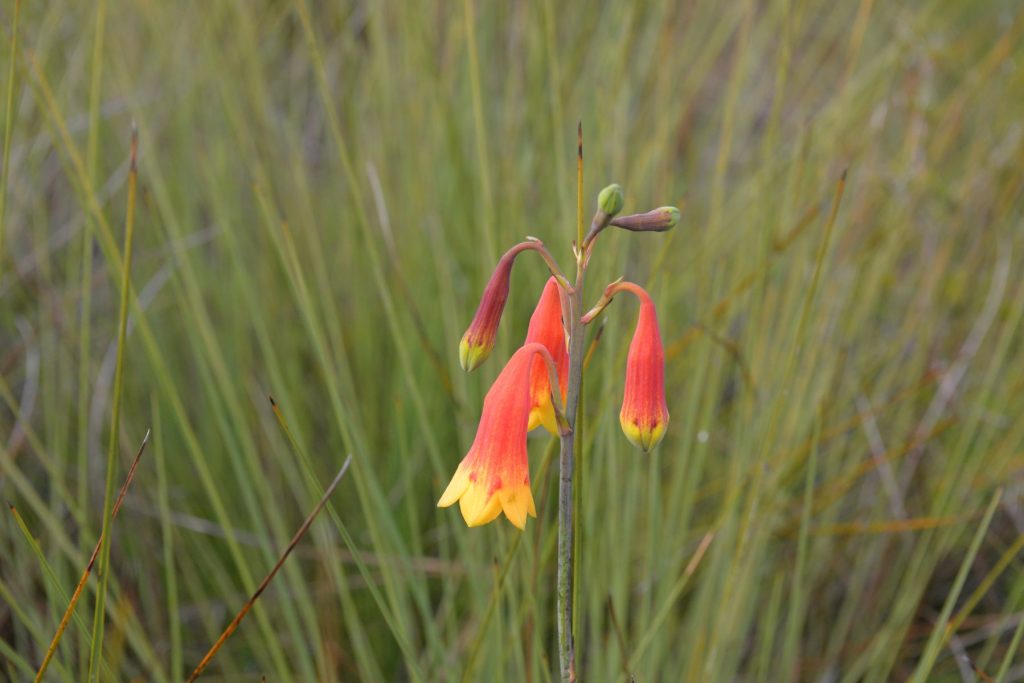
A tufted perennial monocotyledonous herb or lily with thick, fibrous roots and an underground corm.
Patersonia sericea
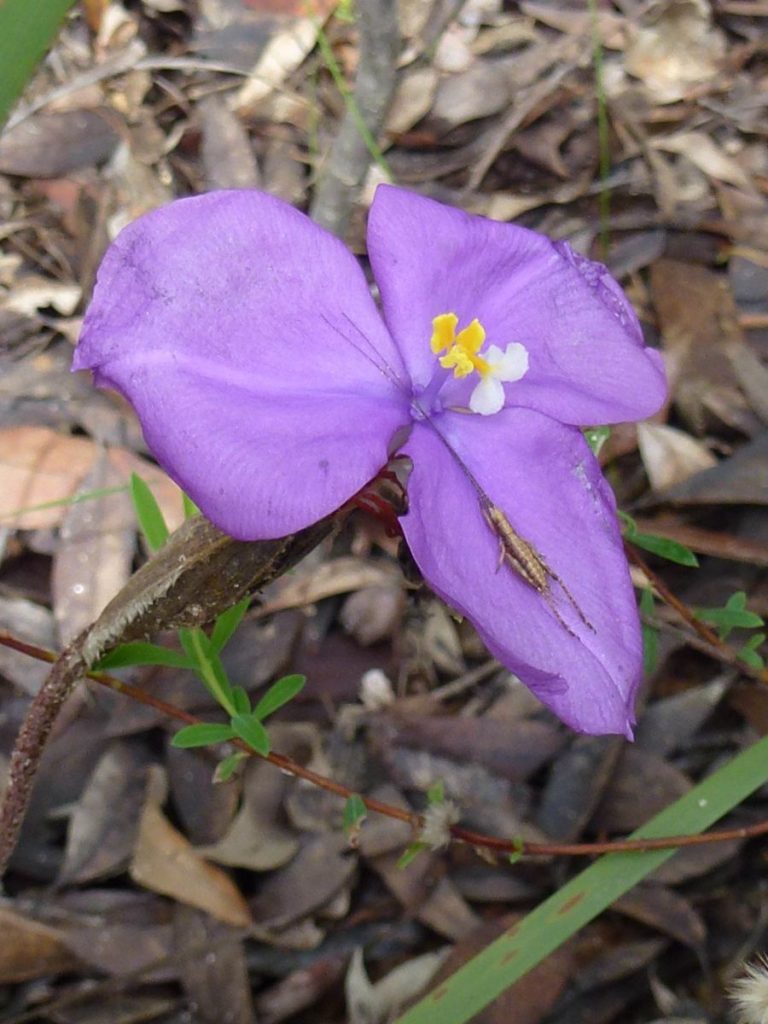
A monocotyledonous, densely tufted, herbaceous perennial to 0.6 metres high by about 0.3 metres wide, with basal leaves growing from a woody rhizome.
Patersonia glabrata
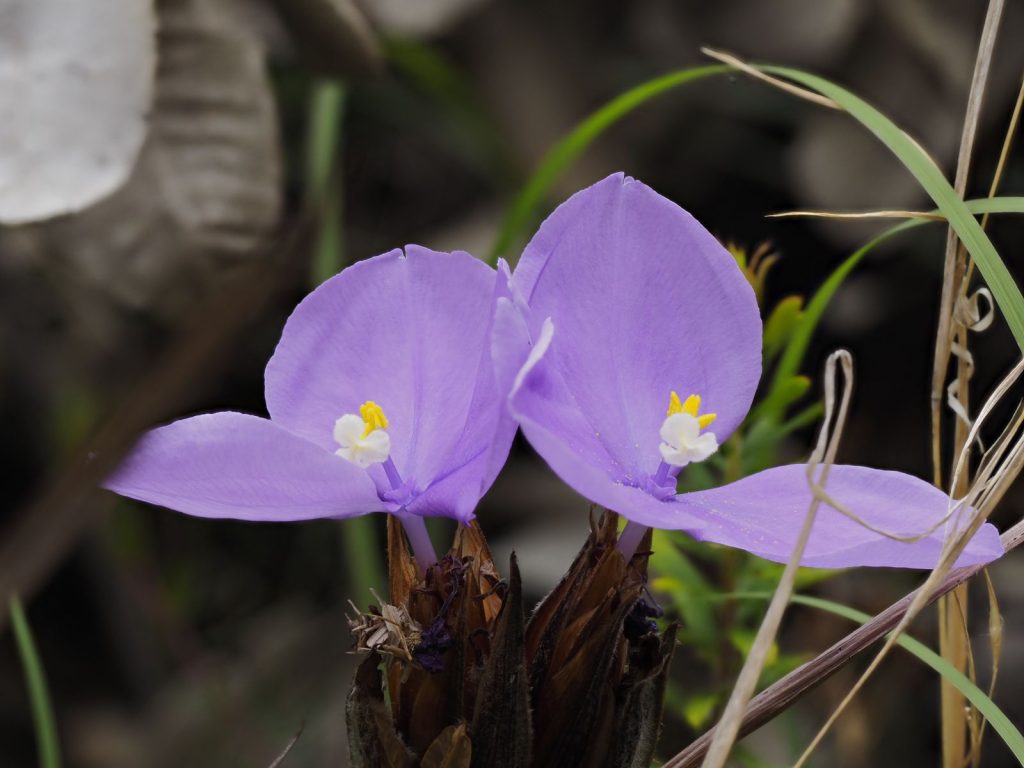
An erect monocotyledonous herbaceous perennial, to 80 cm high, with leaves mostly produced above the ground on stems arising from a woody rhizome.
Patersonia fragilis
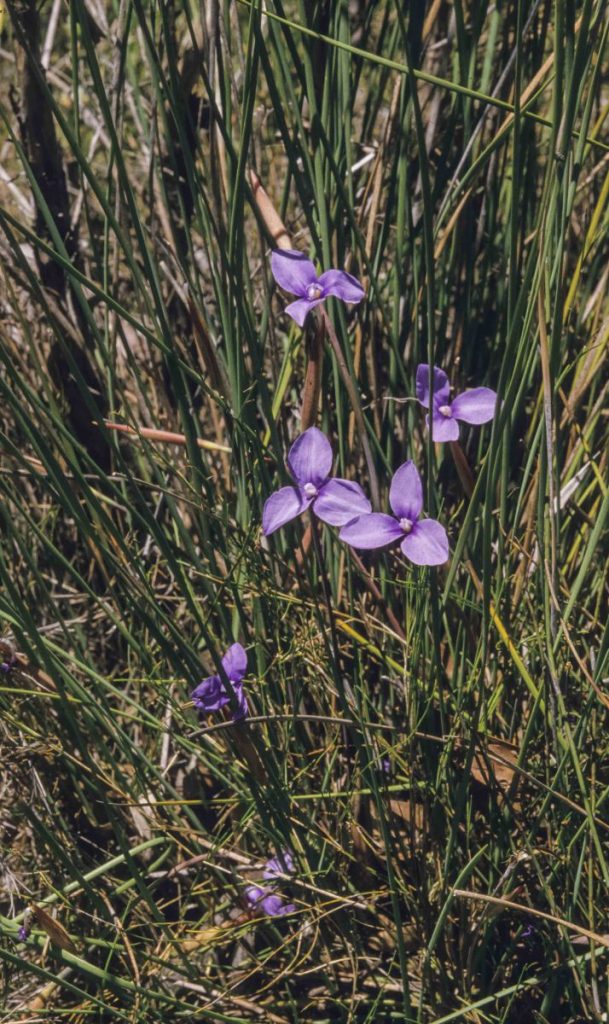
A monocotyledonous, densely tufted, herbaceous perennial to 0.6 metres high by about 0.3 metres wide, with basal leaves growing from a woody rhizome.
Dianella prunina
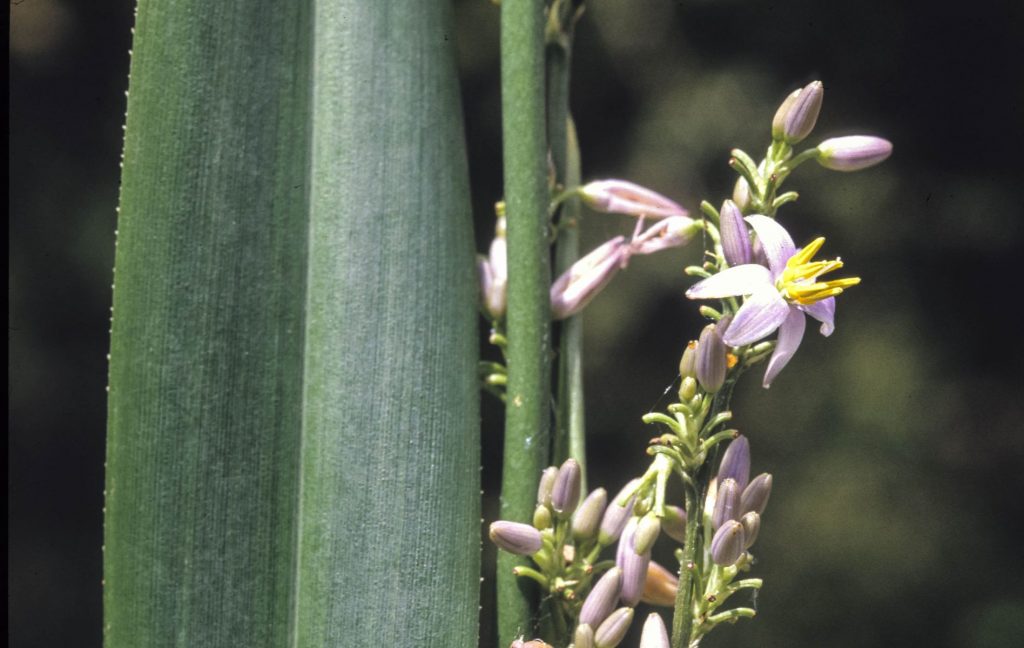
A rhizomatous lily-herb, forming leaves on elevated stems (tufted) with inflorescences to 2 metres tall.
Dianella revoluta
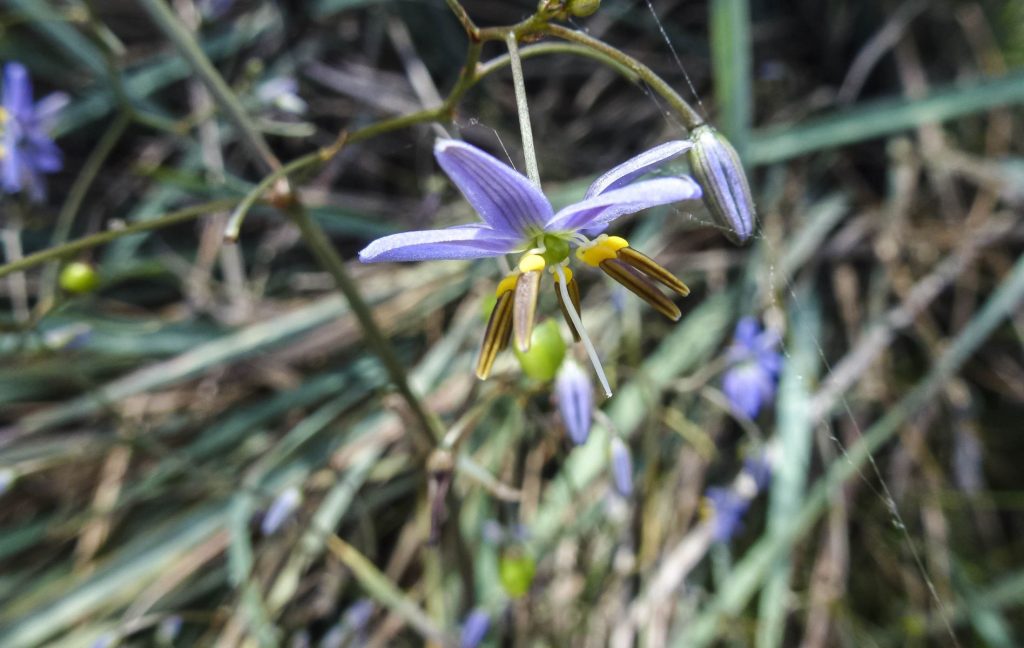
A clumping, perennial herb with rhizomes to 15 cm long, producing clumps of basal leaves.
Dianella longifolia
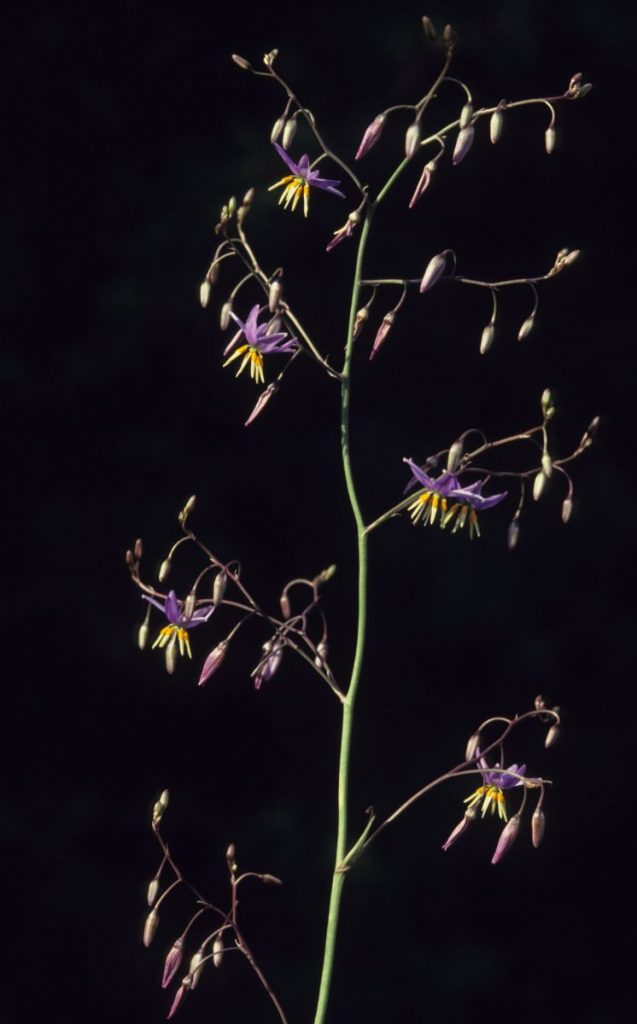
A clumping lily-herb with basal laves on compressed rhizomes to 10 cm long, with inflorescences to 1.5 metres tall.
Dianella congesta
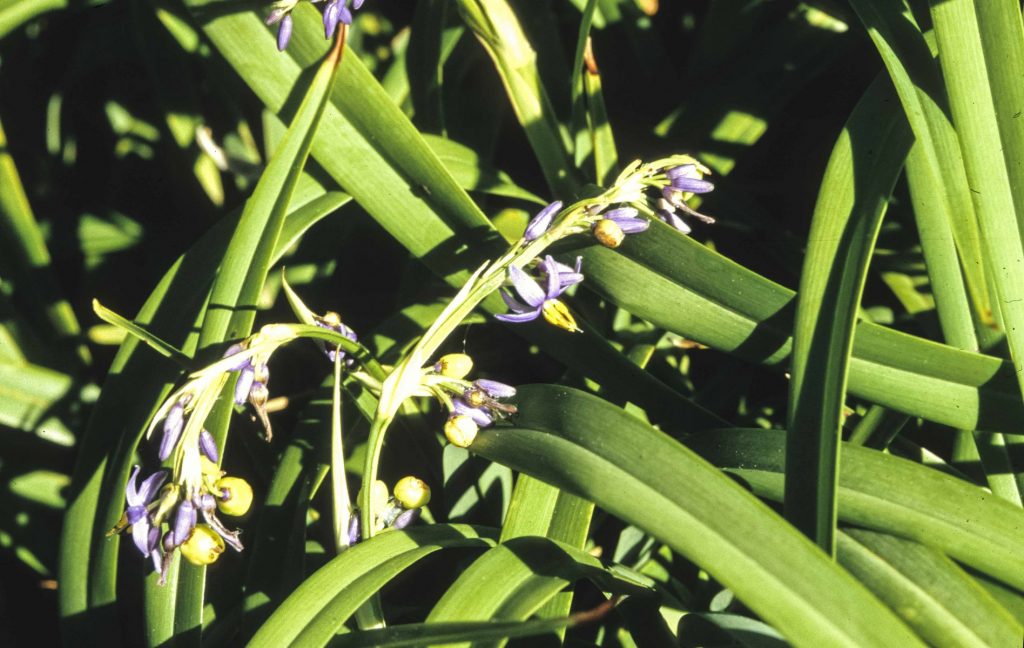
Dianella congesta is a clumping lily-herb with rhizomes to 20 cm long, forming mats, usually with inflorescences within the foliage, rising to about 1 metre tall.
Alpinia caerulea
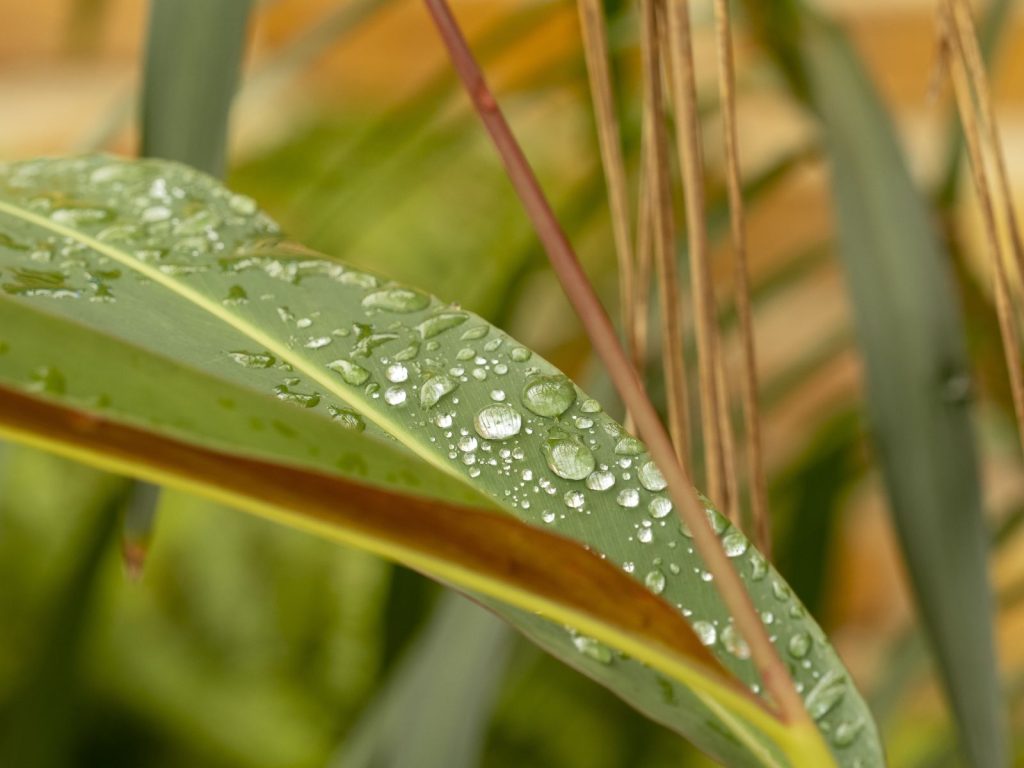
Alpinia caerulea is an understorey perennial lily-type plant (not woody) growing to 3 m high in rainforests and wet sclerophyll forests in eastern Australia. It is found north of Gosford in NSW and extends along the coast into Queensland. It is related to species such as Ginger.
Alpinia arundelliana
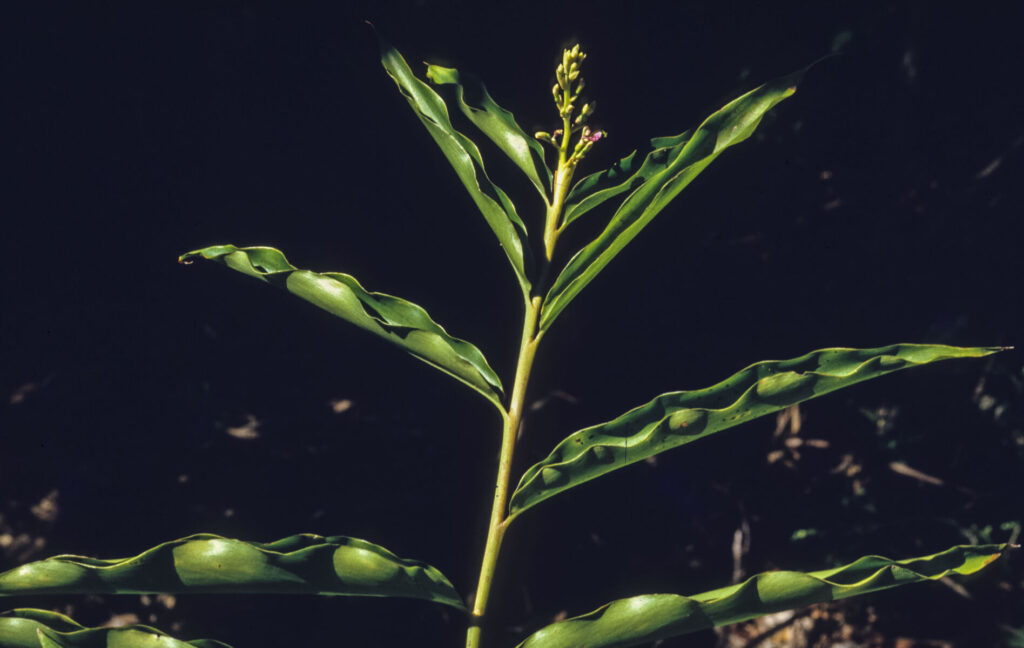
Alpinia arundelliana is an understorey perennial lily-type plant (not woody) growing to 2 m high in rainforest or wet sclerophyll forest; north from Wyong north into Queensland. It is only found in coastal areas.
Cordyline stricta
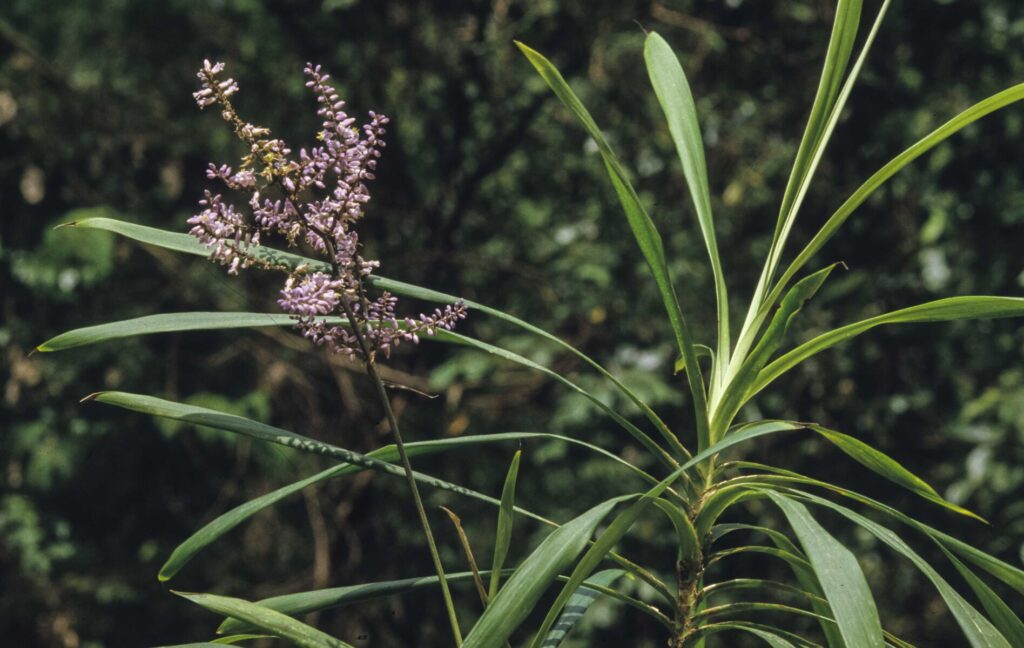
Cordyline stricta is a tall, narrow herbaceous lily-plant to potentially 5 metres tall. North from near Bilpin, NSW, it grows chiefly along the coastal subdivisions into North QLD. Mainly found in wet sclerophyll forest and rainforests.
Carex gaudichaudiana
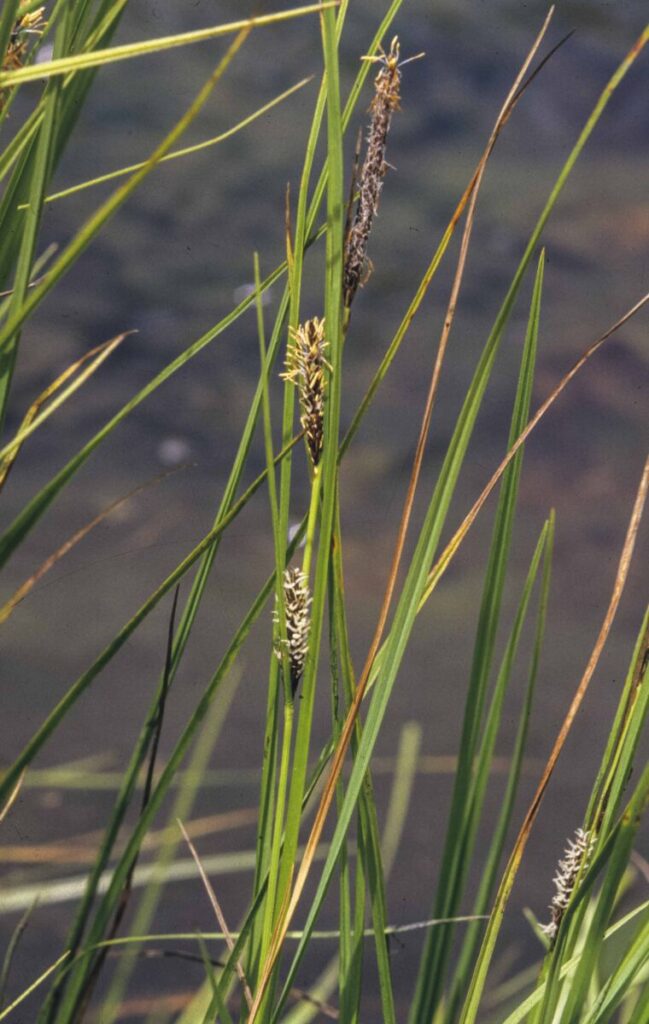
Carex gaudichaudiana is a loosely-tufted sedge to 40 cm tall with creeping rhizome. It grows in wet areas (swamps and creekbanks) from near sea level to alpine areas.
Doryanthes palmeri
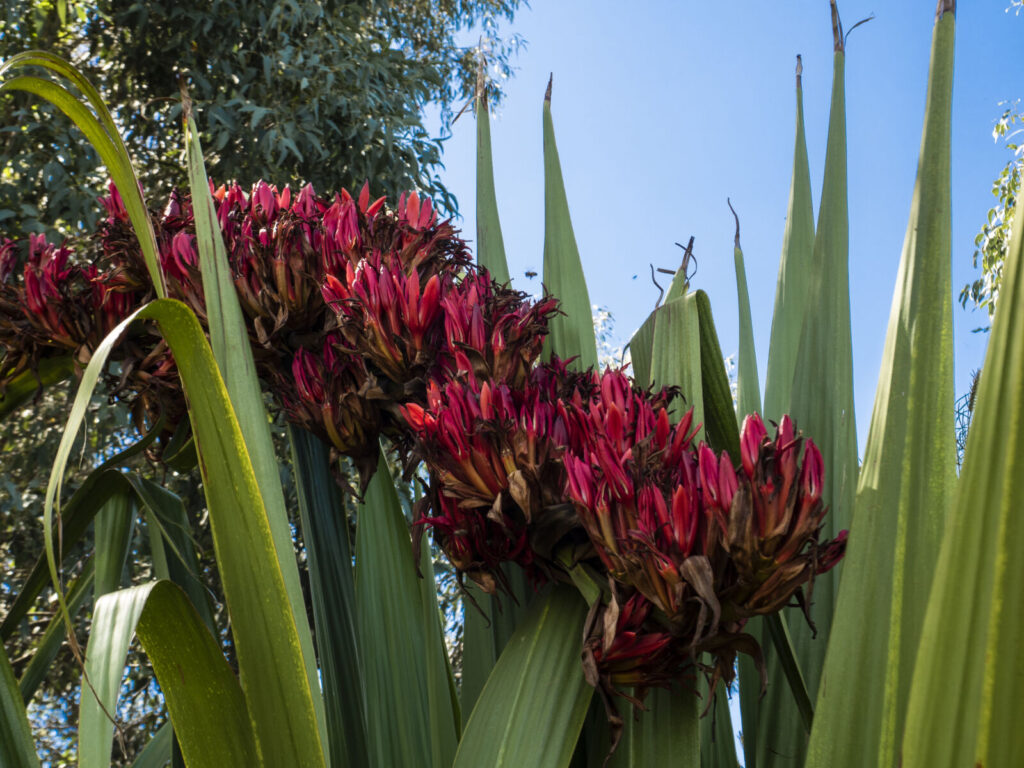
Doryanthes palmeri, the Giant Spear Lily, has long wide sword-like leaves in rosettes. These arise from ground level and produce numerous suckers to form a large dense clump. Leaves are 2 to 3 m long. It normally flowers in spring. Its flower stalk is very long (up to 4 m) and is different from Doryanthes excelsa in that the stalk droops rather than being upright and the flowers are spread further down the stem.
Doryanthes excelsa
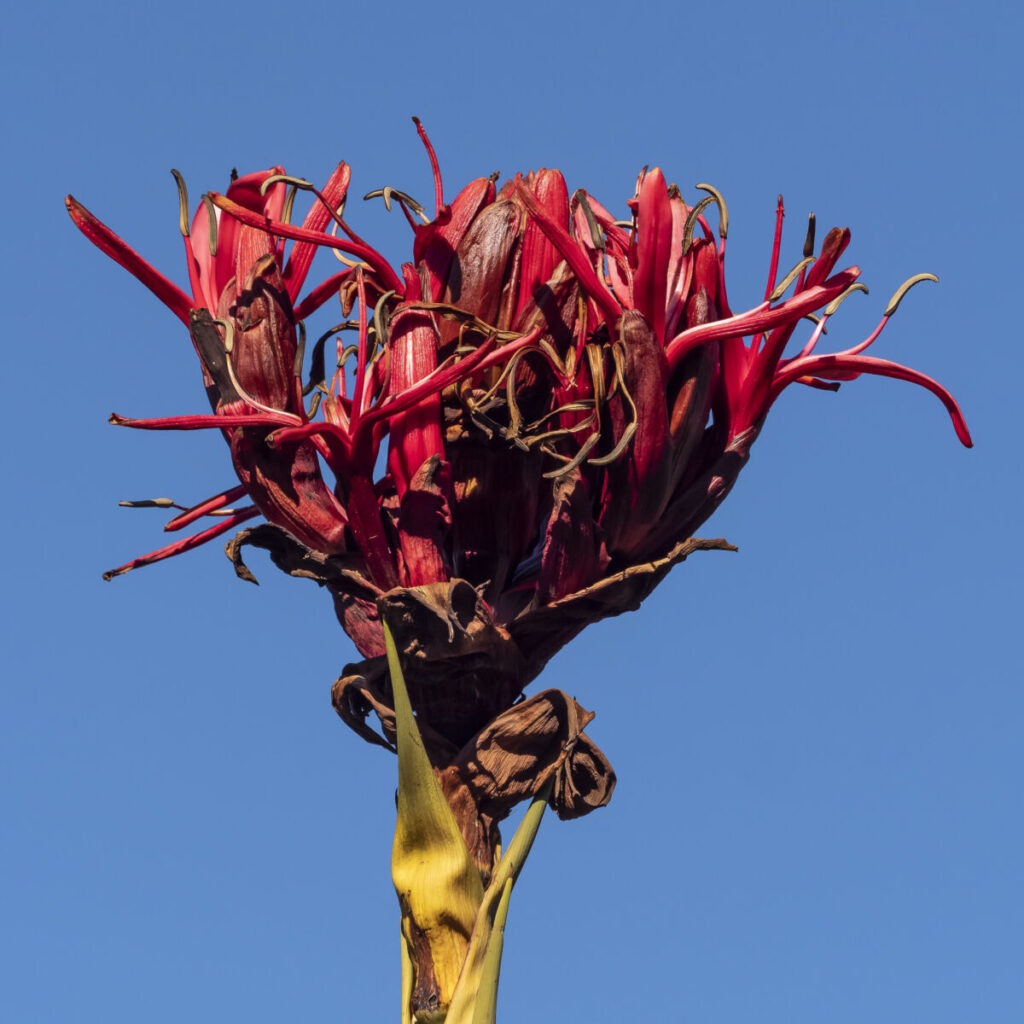
Doryanthes excelsa, the Gymea Lily, is a hardy, clumping monocot with fibrous sword-like leaves which grow up to 1.5 m long and 10 to 12 cm wide. It grows from a thickened underground stem which penetrates deep into the ground to protect against drought and fire, so does best in deep soil.
Poa sieberiana
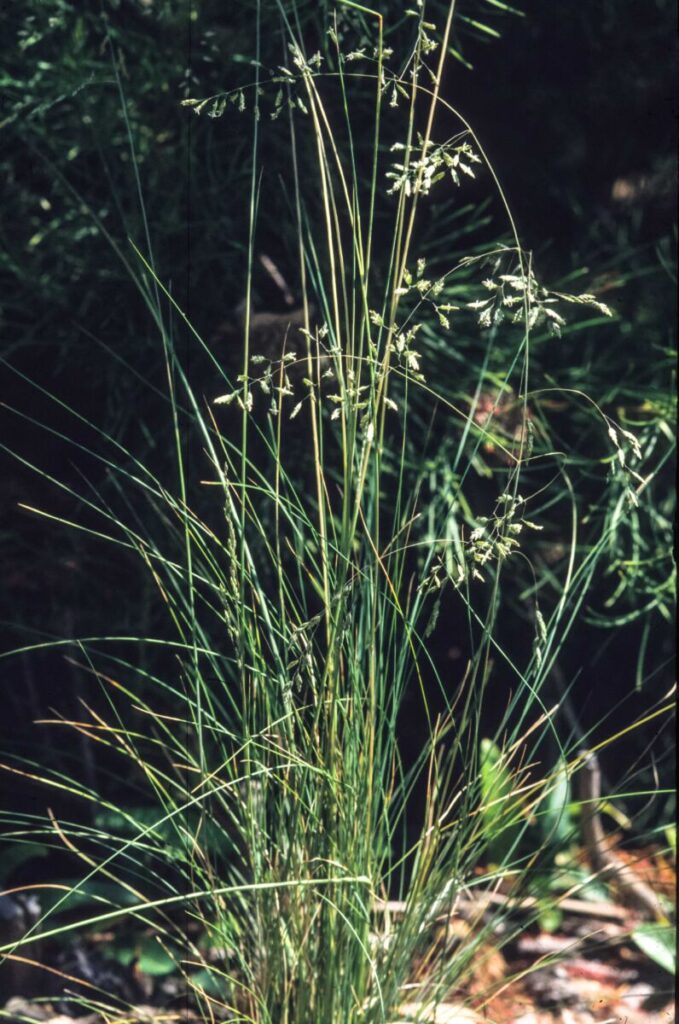
Poa sieberiana is a dense tussock grass with fine green to greyish-green leaves about 50 cm long. There is also a blue variety var. cyanophylla. The very attractive inflorescences (panicles) are about 1 metre tall, from spring to summer, with pale green to purple seed heads. A popular plant in native garden landscapes.
Bulbine bulbosa
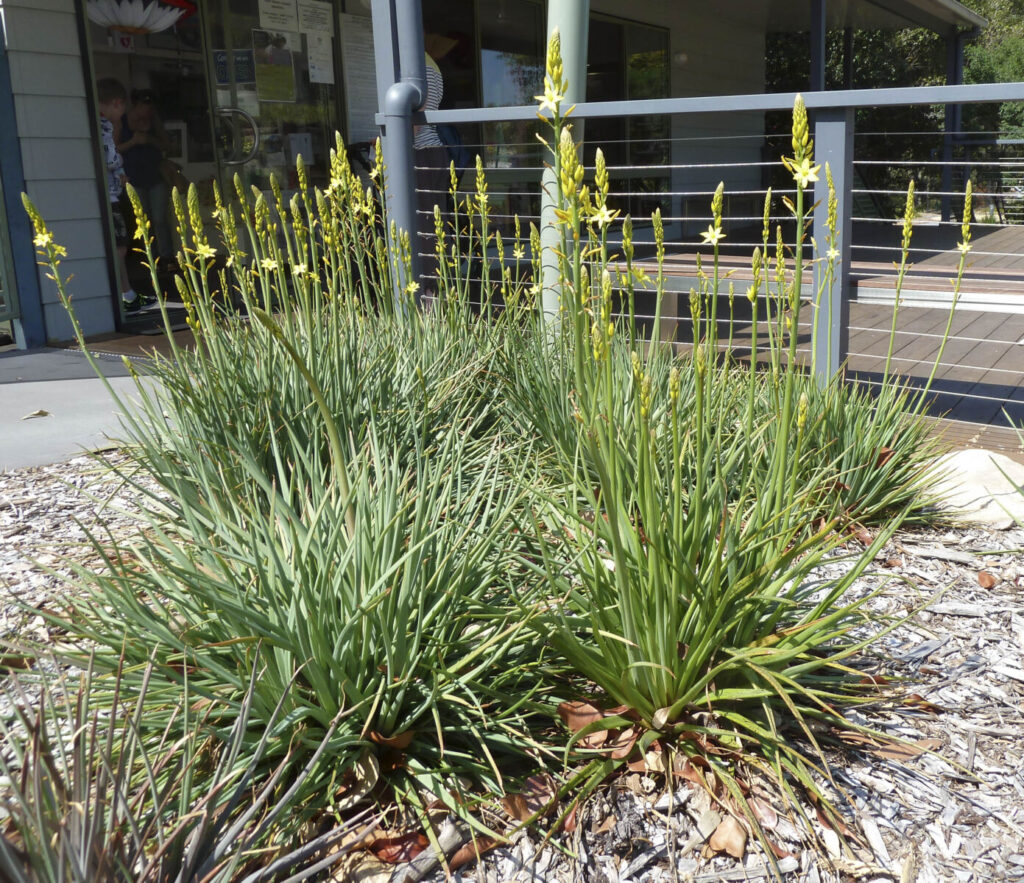
Bulbine bulbosa grows throughout temperate Australia from central Queensland to Tasmania and South Australia as well as all over NSW, usually on heavier soils. It grows in a variety of habitats including dry sclerophyll woodlands and forests as well as grasslands and rock crevices. It can be found in large numbers in cleared and regenerating open grassy areas after rain.
Poa labillardierei
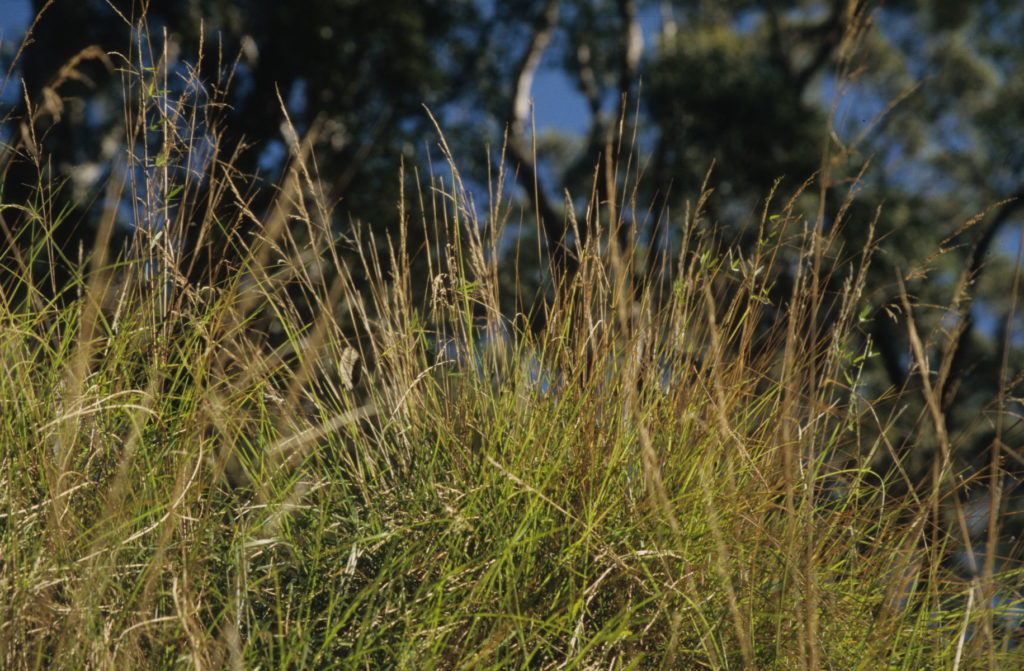
Poa labillardierei is an attractive low maintenance feature or background ornamental grass, ideal for landscaping and suitable for group plantings. Is fast growing in all types of soils with a shallow root system. Low maintenance once established.
Blandfordia nobilis
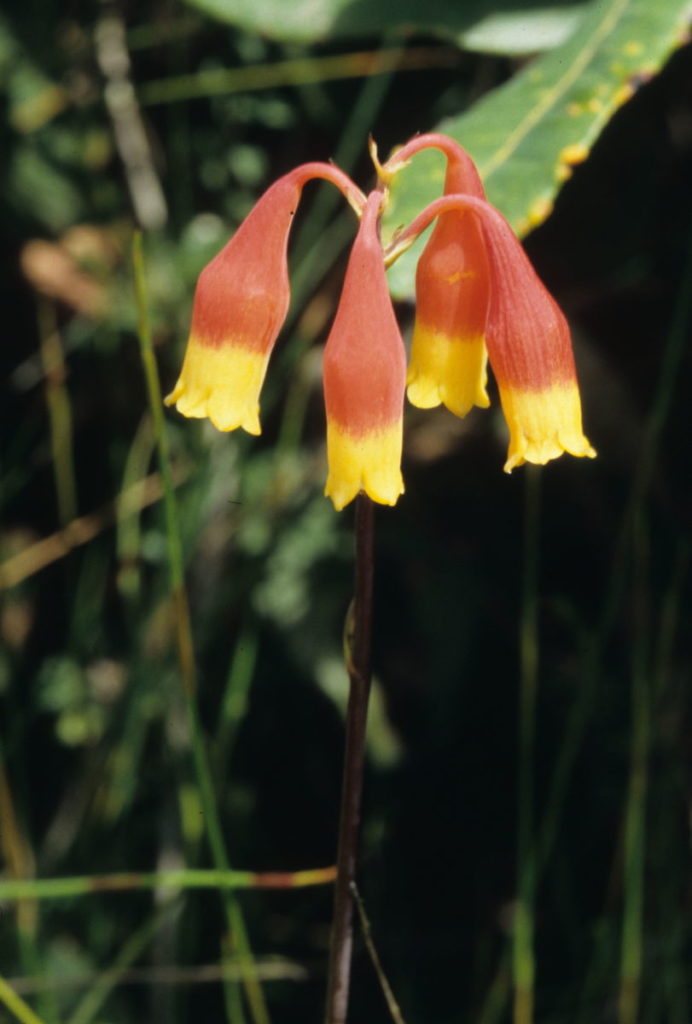
Blandfordia nobilis prefers to be grown in full sun in coastal regions and not colder, drier shady positions. It grows best where the soil is naturally deep and light (sandy) with fairly constant moisture.
Calostemma purpureum
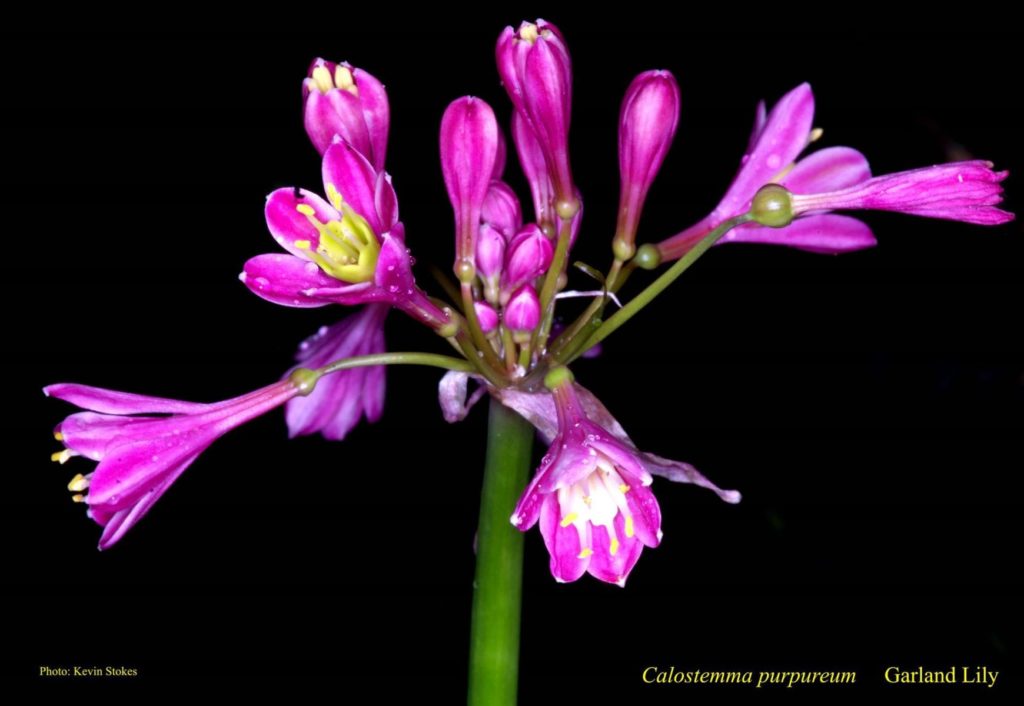
Calostemma purpureum seems to be one of those plants that gain popularity and then, for some unknown reason just stop being around, at least in the local area of Newcastle. When first starting a native garden, I recall seeing this attractive plant in other members’ gardens and also available to buy in specialist nurseries. I am pleased that I have “rediscovered” this lily and had the pleasure of many flowering heads during late summer. Commonly called Garland Lily, it belongs to the family Amaryllidaceae and is the only wholly endemic genus of that family in Australia.
Orthrosanthus multiflorus
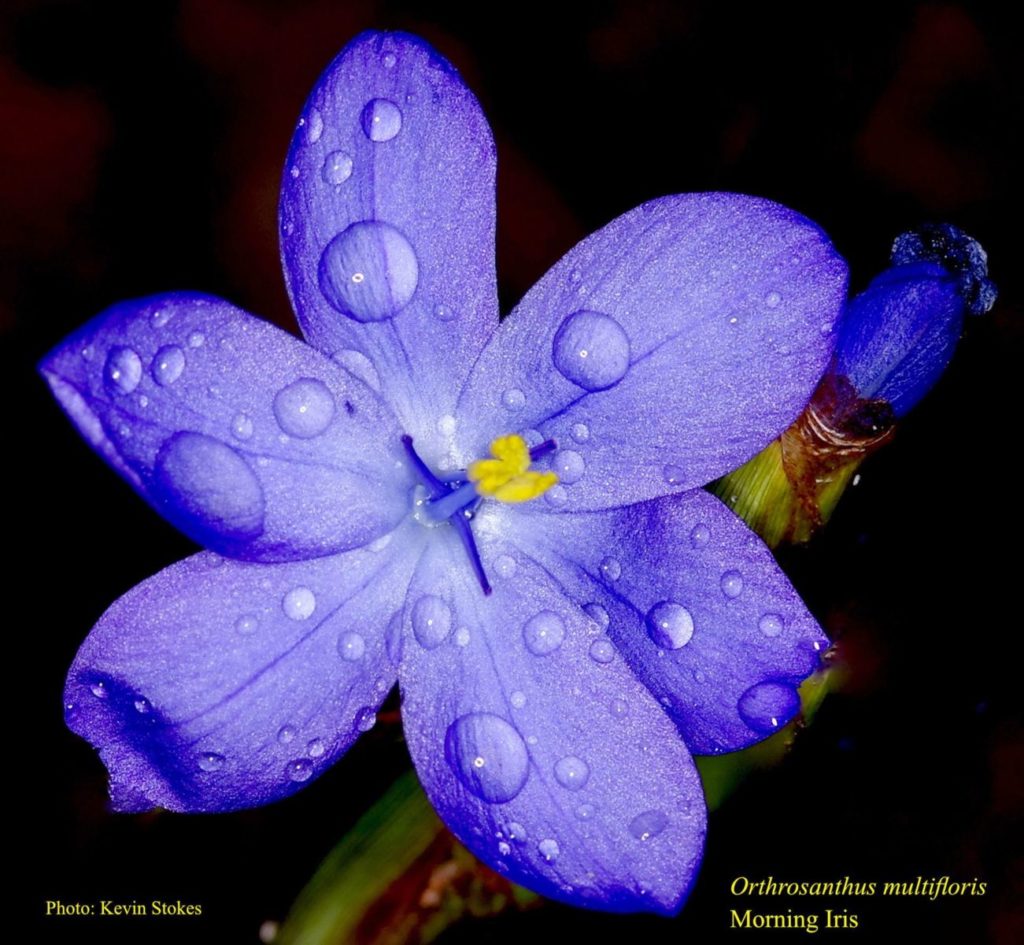
The Morning Iris is found in southern South Australia and Kangaroo Island. It also occurs in Victoria and Western Australia. It is a very hardy and attractive plant for informal rockeries or massed displays. The plants somewhat resemble Dianella sp. in form but not in flower.
Themeda triandra
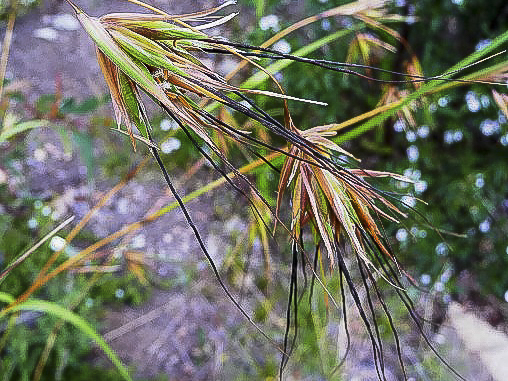
Themeda triandra is a tufted perennial reaching a height of 1.5 metres with a spread of up to 1 metre. Leaves are 10-50 cm long and 2-5 mm wide, green to grey and dry to an orange-brown in summer. The flowering period is from December to February. During this time plants produce large, distinctive, red-brown spikelets carried on branched stems. Spikelets have black awns (see image) that are retained by the seeds when shed. The spikelets make this perhaps the easiest of our native grasses to identify.
Bulbine vagans
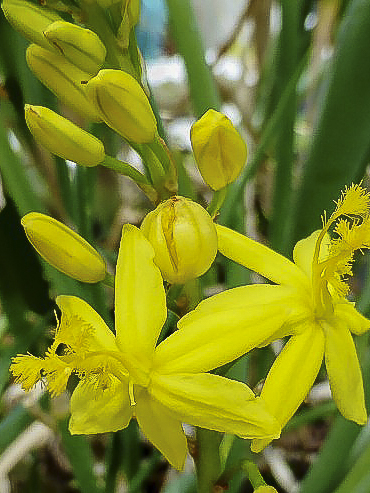
Bulbine vagans is a perennial herb reaching a height of 20 to 60 centimetres. The roots are thick; the long, shiny, succulent leaves have a channel down the middle and are up to 30 centimetres long. From spring to mid-summer plants produce many flowering stalks (or scapes), with each scape holding up to 45 bright yellow flowers.
Bulbine semibarbata
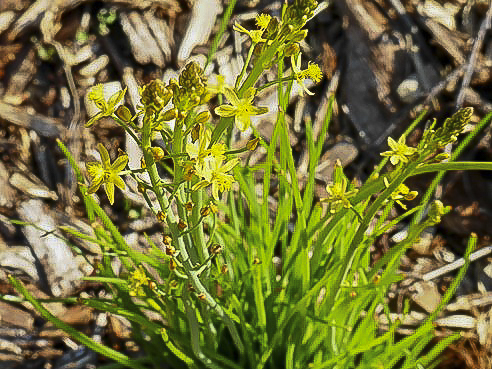
Bulbine semibarbata is a perennial herb. Succulent leaves are up to 30 centimetres long with a channel. From September to December, plants produce multiple flowering stems up to 40 centimetres long. Each flowering stem holds up to 35 yellow blooms, with each flower up to two centimetres in diameter.
Wurmbea dioica
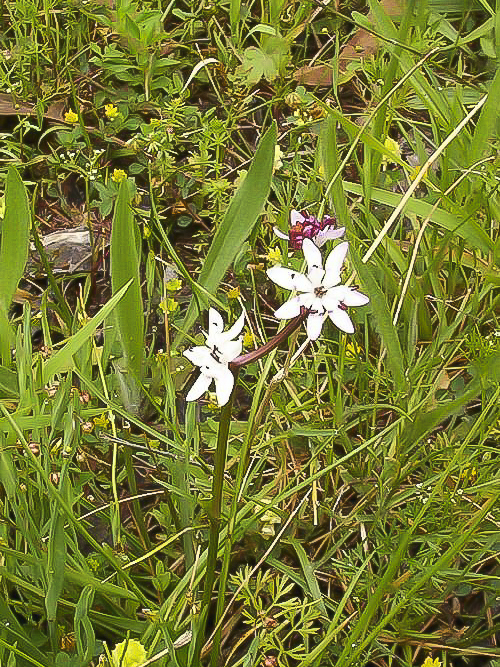
Wurmbea dioica, Early Nancy, is a member of the Colchicaceae family and is a small perennial herb with a corm, two or three annual leaves and a single flowering spike carrying one to eight flowers. Spikes may be up to 30 centimetres tall. Blooms have six petals. They are usually white and appear in spring. Early Nancy is mostly dioecious (male and female flowers on different plants). A small percentage of flowers may have both male and female parts. The fruit is a one centimetre long capsule that contains 10-50 seeds.
Lomandra Tanika or Tanika Lomandra (Lomandra ‘LM 300’)
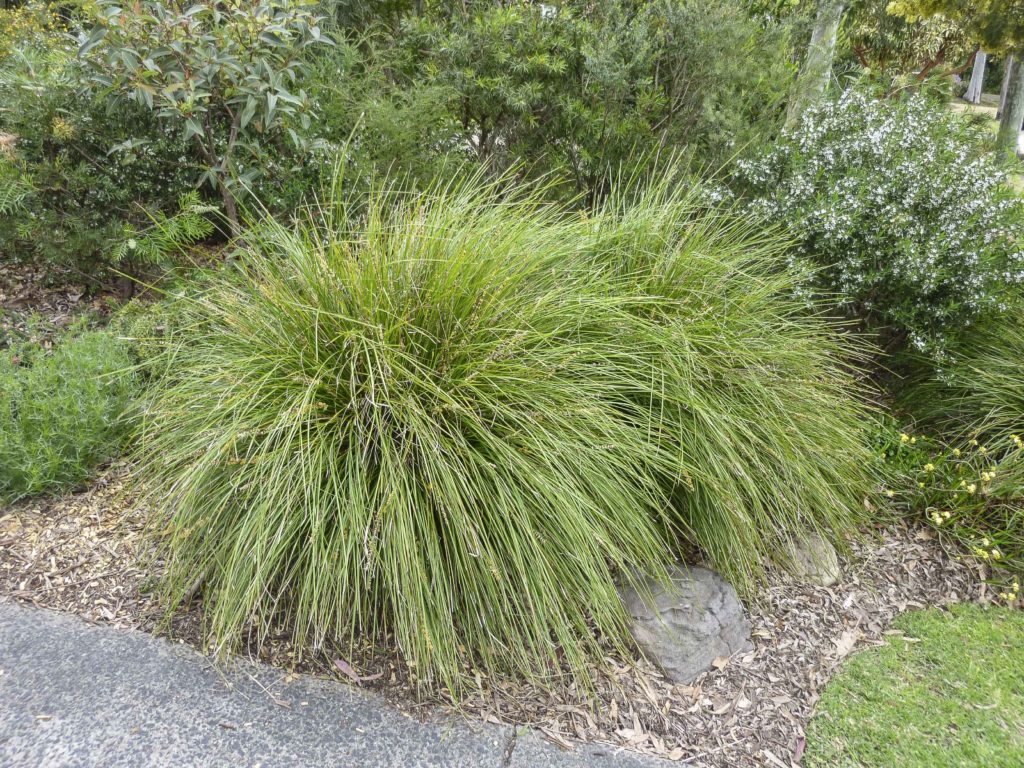
I have been growing Lomandra ‘Tanika’ in my garden in the northern Sydney suburb of Westleigh for many years. It is an improved compact fine leaf form of the popular and widely grown Lomandra longifolia and you can classify the plant as a ‘strappy leaf’ plant. My plants are growing in a thin layer of topsoil over a clay sub soil and receive little additional watering once they were established.
Lomandra leucocephala
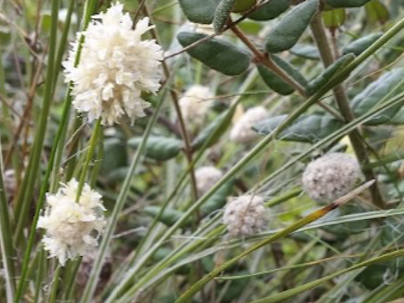
Lomandra leucocephala occurs naturally on inland drier slopes of the Great Dividing Range of Queensland and northern NSW. This slow growing Lomandra has 25mm balls of fluffy white flowers which exude a lovely caramel fragrance. The leaves are usually very narrow (1 to 2mm wide) with white leaf sheaths.
Lomandra multiflora
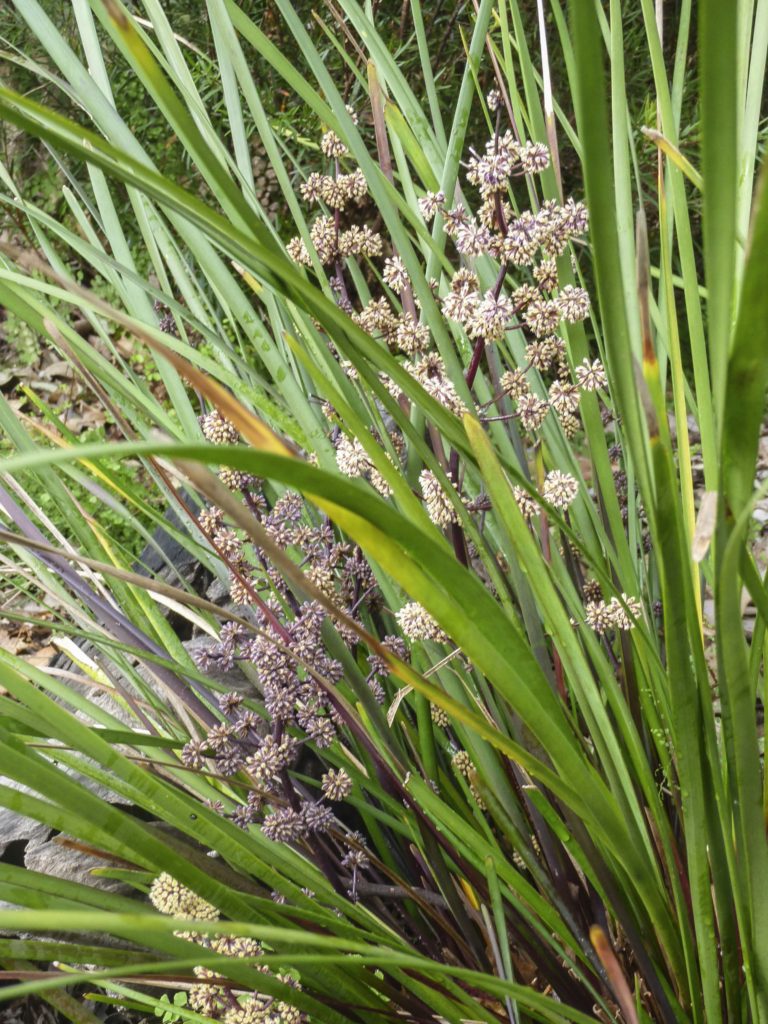
Lomandra multiflora is found in the Northern Territory, Queensland, New South Wales, Victoria and South Australia and also in Papua New Guinea. I have been growing Lomandra multiflora in my garden in the northern Sydney suburb of Westleigh for many years. My plant is growing in a thin layer of topsoil over a clay sub soil and receive little additional watering once they were established
Libertia paniculata

Libertia paniculata is widespread in rainforest and wet open forest on coast and adjacent ranges from south-east Queensland to eastern Victoria. The other Australian species is Libertia pulchella. They are both perennial herbs with grass-like leaves arising from an underground rhizome.
Arthropodium fimbriatum
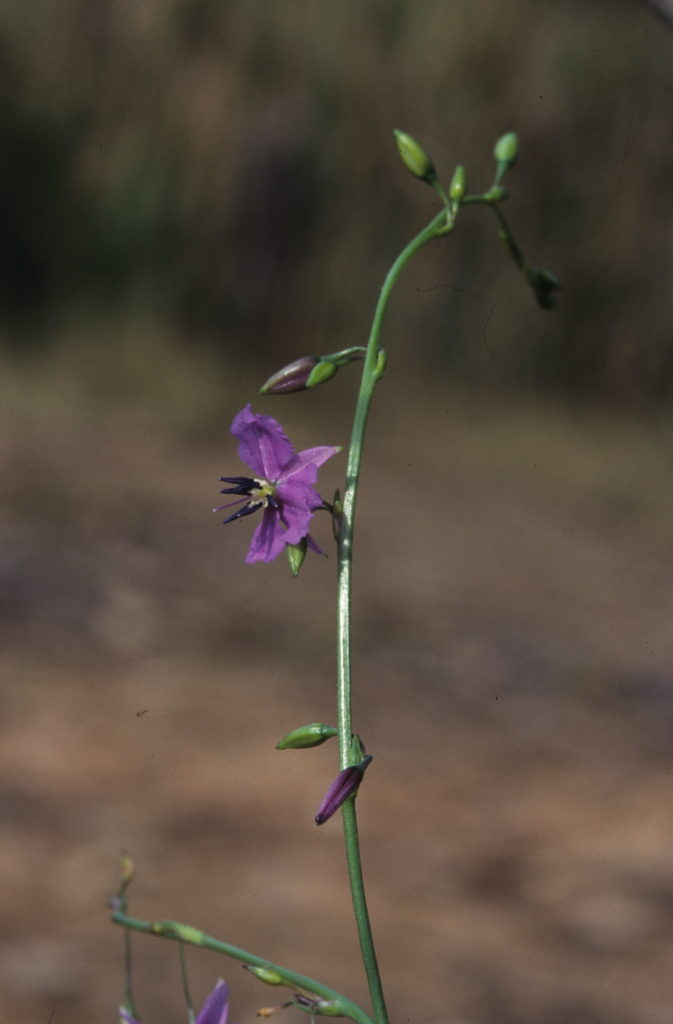
Arthorpodium fimbriatum, the Nodding Chocolate Lily, is an erect herb reaching a height of 1 metre with fibrous roots terminating in a tuber. The linear leaves are up to 35 centimetres long and grass-like in appearance. In spring and summer each plant carries a flower spike carrying about 12 large, blue, six-petalled flowers.
Dianella caerulea ‘King Alfred’
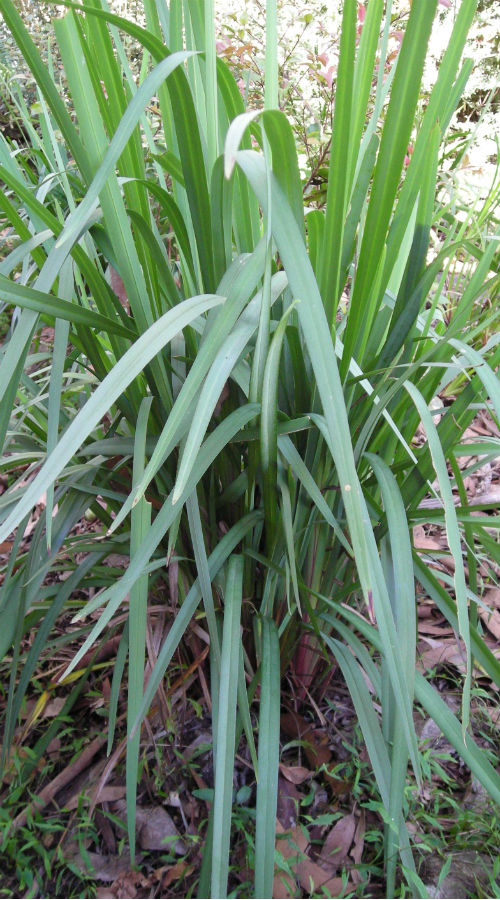
Dianella caerulea is an attractive upright plant with flax-like leaves to 60 cms high. Flowers are blue with yellow anthers and are borne on spikes to one metre high and are followed by globular bright blue-purple fruit. It grows from coast to the mountains along Eastern Australia. This species has many named varieties and this article is about ‘John 316’ King Alfred. Other varieties are ‘Cassa Blue’ and ‘Little Jess’ to name a few.
Crinum pedunculatum
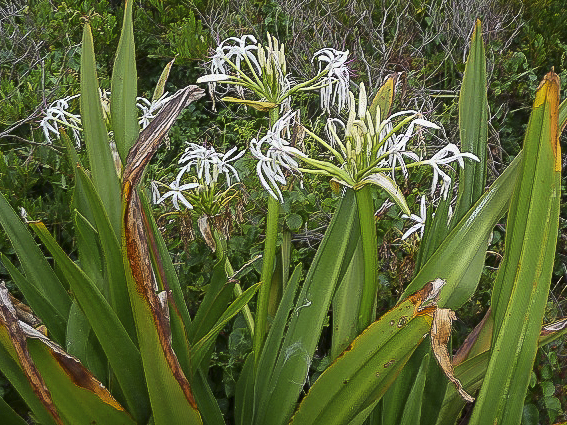
Crinum pedunculatum is a member of the Amaryllidaceae family in company with the exotic Narcissus and Nerine. The accepted common names are Swamp or River Lily. Crinum pedunculatus grows in colonies along tidal areas and streams. The species is evergreen, hardy and resists frost.
